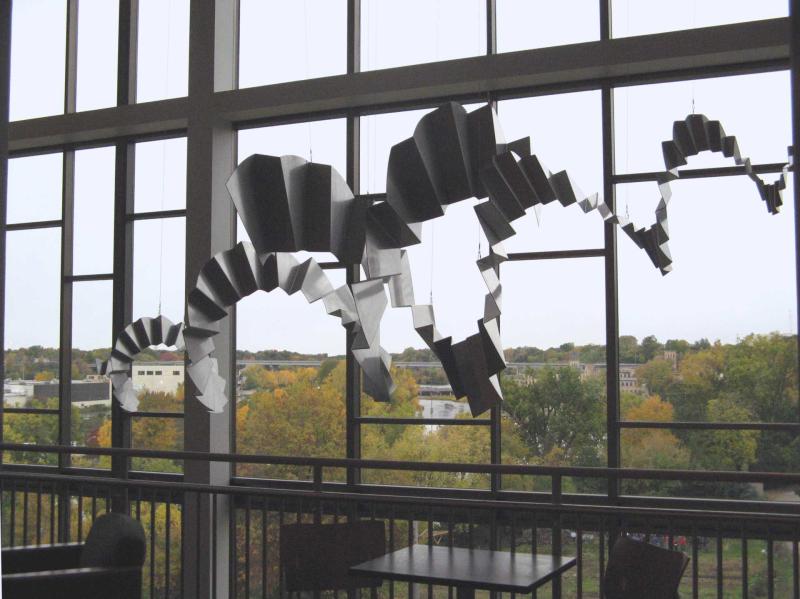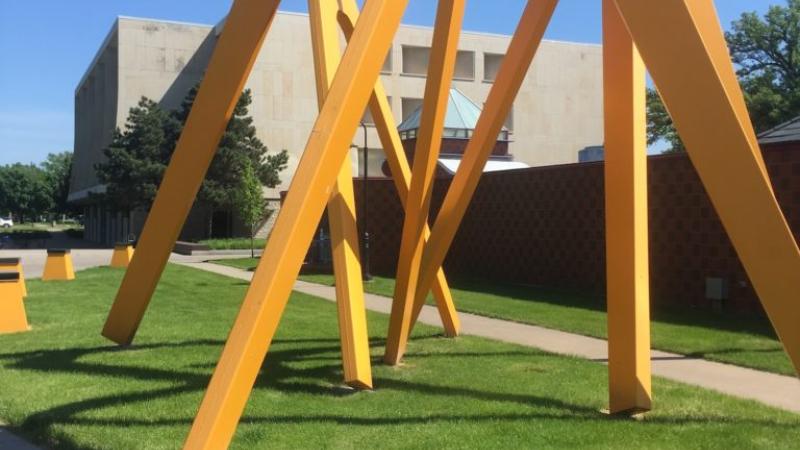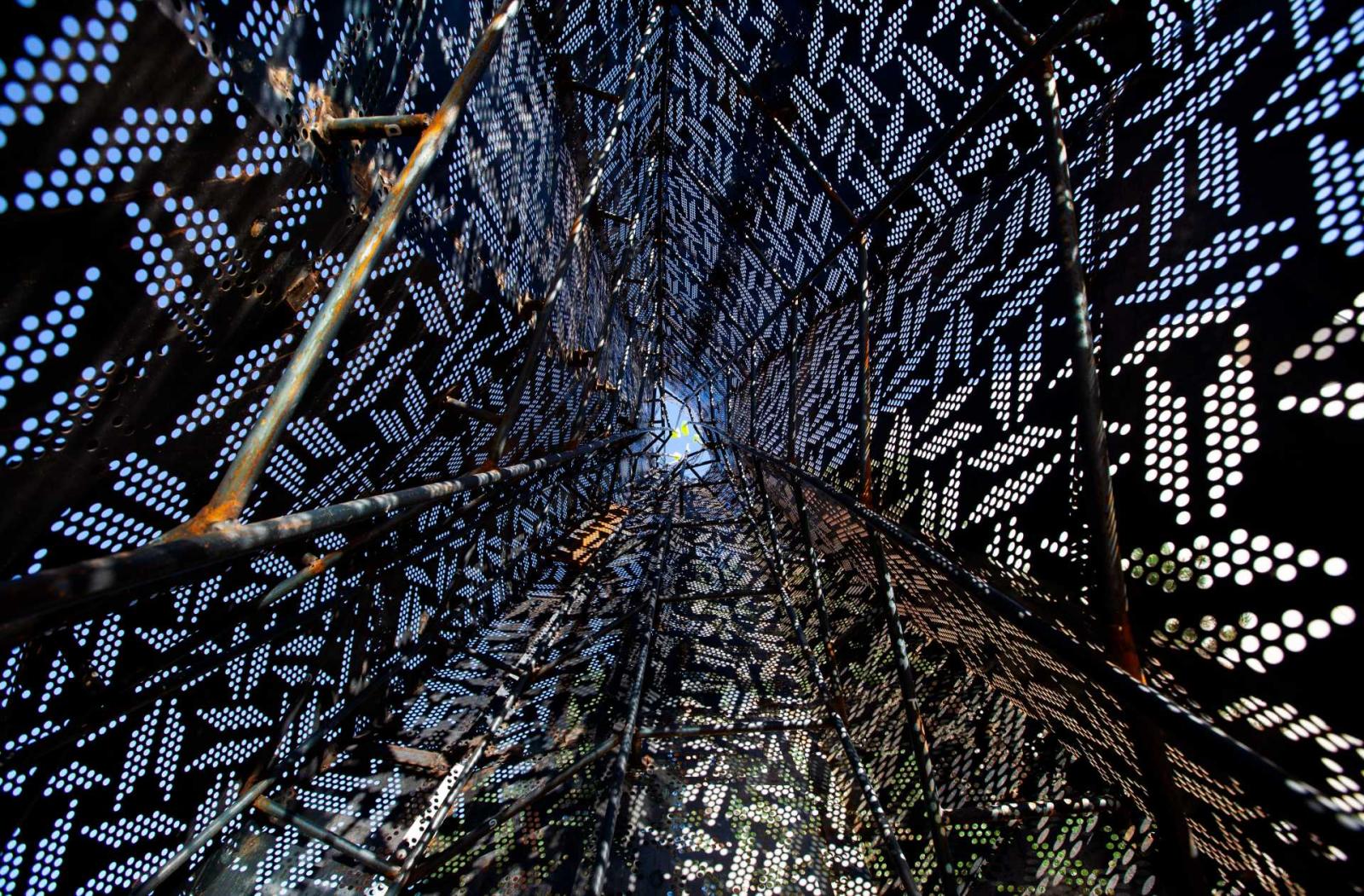
Otāēciah (Crane Sculpture)
Located on the west side of Kaeyes Mamaceqtawuk Plaza
Chris T. Cornelius (Oneida), 2021
The form of Otāēciah references a crane, one of the five traditional Menominee clan symbols. The perforated and patinaed steel panels, modeled after woodland textile patterns, overlap like a bird’s feathers. Menominee beadwork designs, created with elements of geometric patterns, are prominently featured. The decorative shapes that crown the piece signify ceremonial regalia. The sculpture points directionally toward the present land of the Menominee Nation. The three inside posts supporting the sculpture represent LUNA’s motto: “We stand together— stronger together.” This work was dedicated on Indigenous People's Day in October 2021.
Chris Cornelius is a citizen of the Oneida Nation of Wisconsin and Chair of the Department of Architecture at the University of New Mexico. He is the founding principal of studio:indigenous, a design practice serving Indigenous clients.
Otāēciah Sculpture Pronunciation Guide
Audio guide: Menominee elder Dennis Kenote provides pronunciation for Otāēciah.
Menominee Orthography: Otāēciah
International Phonetic Alphabet: ɔtɑːʔt͡ʃijɑʰ
Pronunciation guide: o-TAA-chee-ah
Translation: Crane
Kaeyes Mamaceqtawuk Plaza Pronunciation Guide
Audio guide: Menominee elder Dennis Kenote provides pronunciation for Kaeyes Mamaceqtawuk
Menominee orthography: Kāēyas mamāceqtawak
International Phonetic Alphabet: /kajæs məmɑːʔt͡ʃɪtɑwək /
Pronunciation guide: Ka-YES muh-MAA-chi-TA-wuk
Translation: Ancient people that move
Plaza and Sculpture Word History
Audio guide: Menominee elder Dennis Kenote provides history on the language of the words Otāēciah and Kaeyes Mamaceqtawuk.
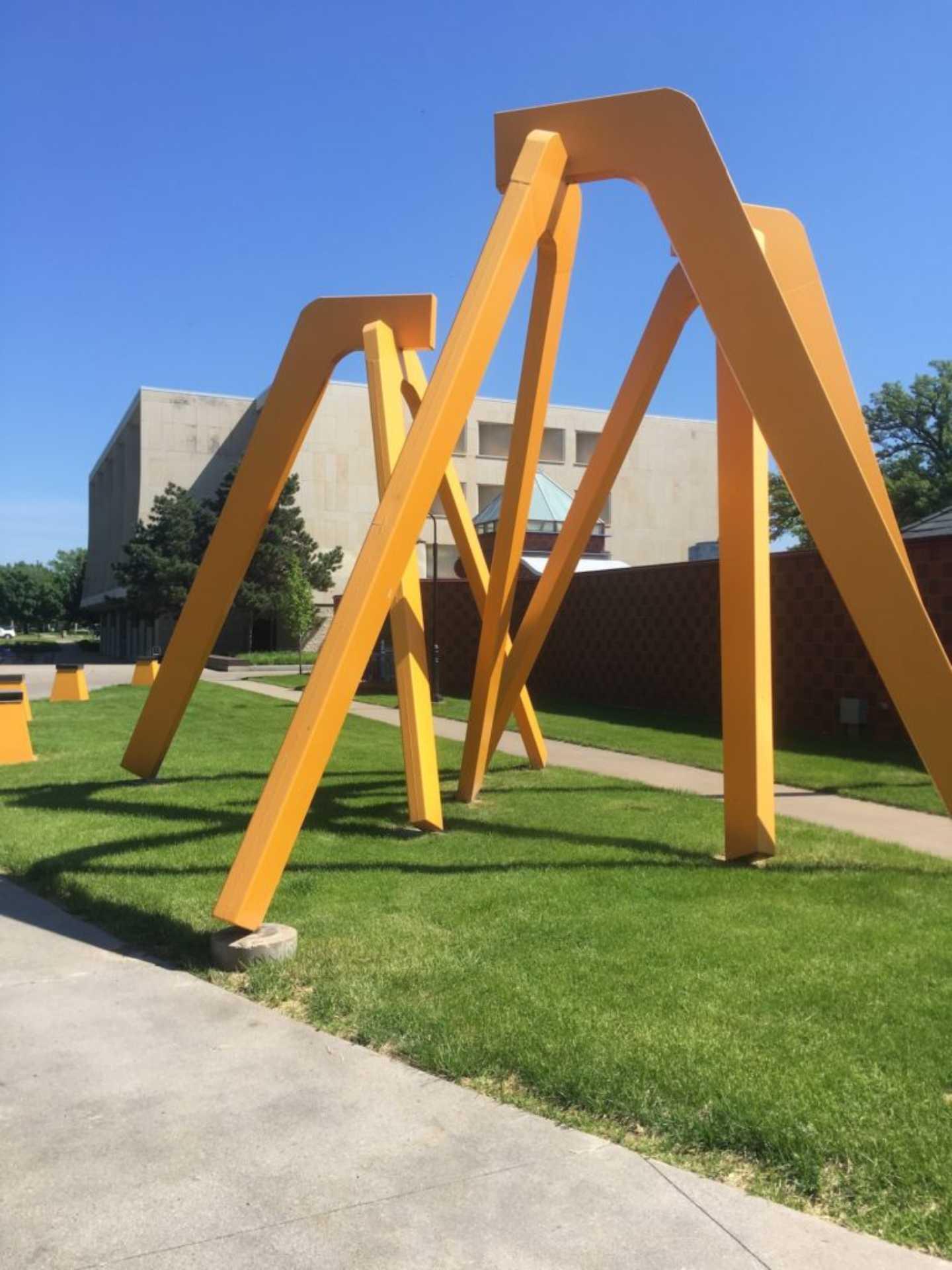
Aerial Landscape
Located on the west side of the Wriston Art Center
Rolf Westphal, Frederick R. Layton Distinguished Visiting Professor in Studio Art, 1988 (reinstalled 2014)
The trio of structures that comprise part of Aerial Landscape are abstract metaphors for the prow of a Finnish kirkkovene, a “church boat” that was used to ferry rural inhabitants to Sunday Mass. The four low bollards contrast the heroic triptych, inviting viewers to have a more intimate experience and, as they peer through the darkened glass, a revelation of imagined landscapes inside each box.
Aerial Landscape was taken down in 2010 for much-needed repairs and conservation. Thanks to the support of anonymous donors, Lawrence University was able to initiate a restoration project in the fall of 2013 and all components of the striking sculpture were re-installed in late summer 2014.
Learn more about Rolf Westphal's life and work
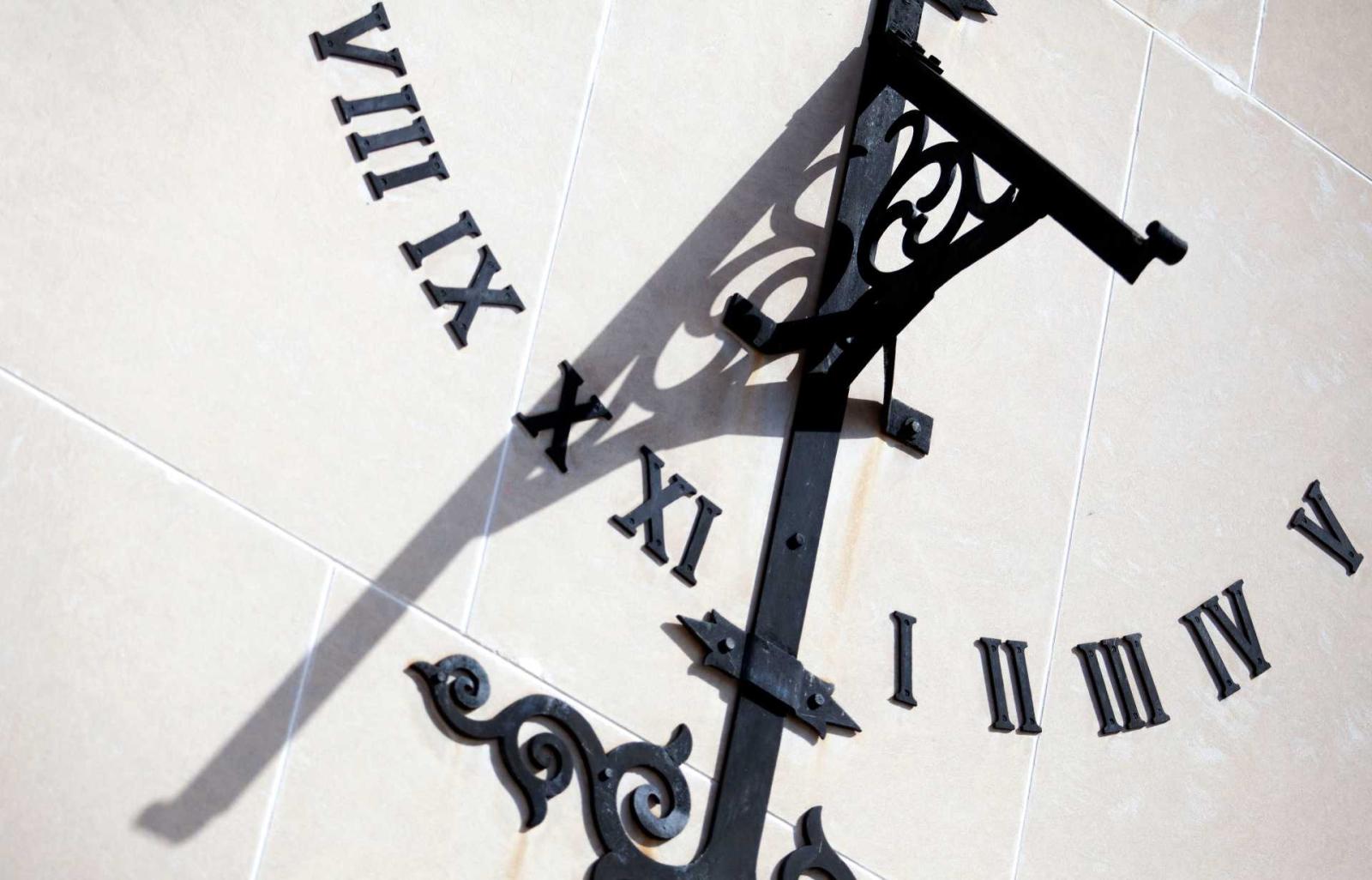
Merrill Hall Sundial
Located on the south side of Main Hall
Milwaukee-Downer College and Lawrence College consolidated in 1964. This sundial, formerly on Merrill Hall (now part of the University of Wisconsin-Milwaukee campus), was moved in 1973 to the south side of Main Hall by the Milwaukee-Downer College Class of 1932.
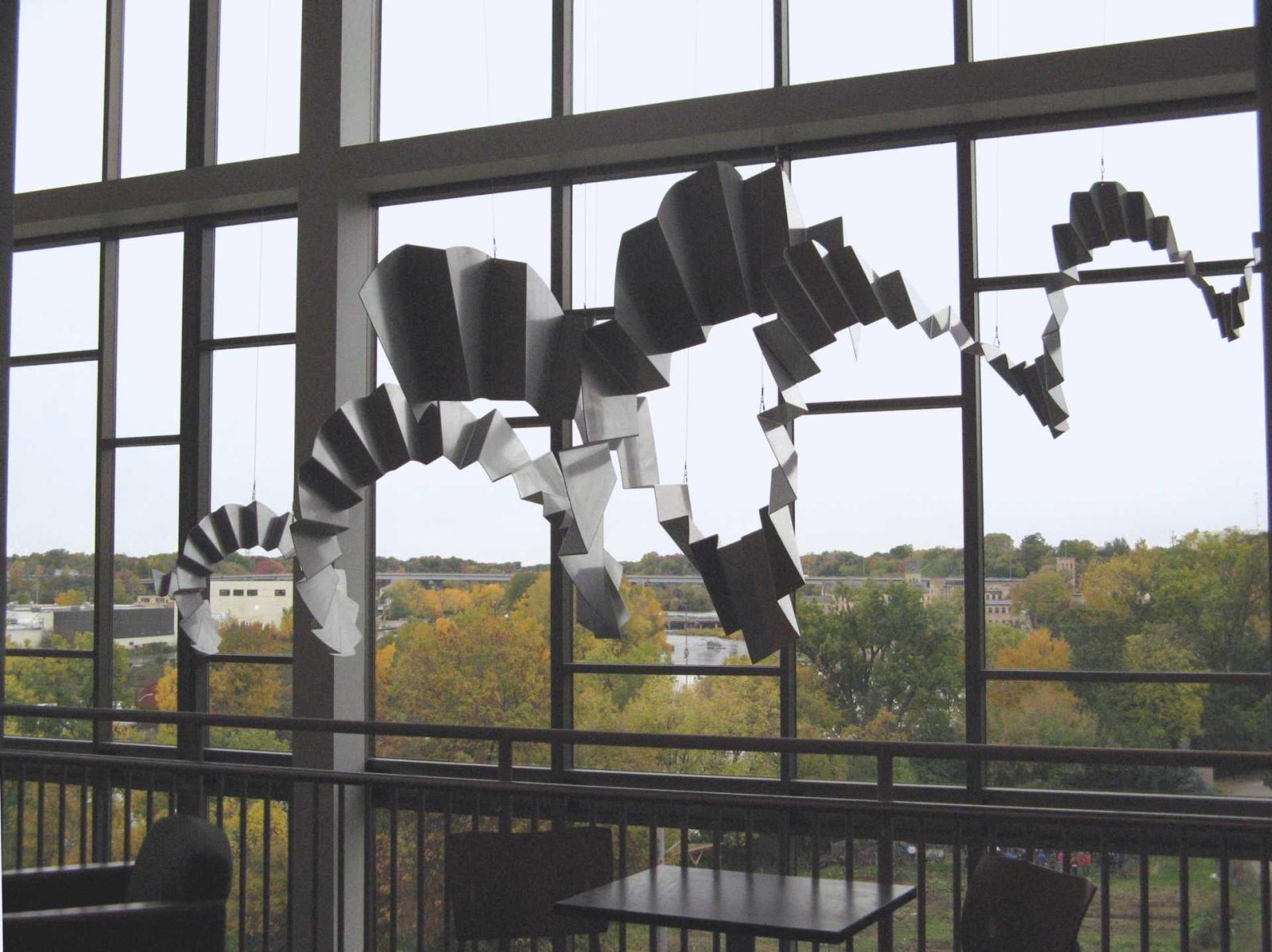
Place to Place
Located in the Warch Campus Center
Actual Size Artworks (Gail Simpson and Aristotle Georgiades), 2009
This sculpture is in the form of two intertwined, tapering spiral staircases. A winding, indirect path is meant to be a metaphor for the experience of being a student, and the resulting cocoon-shape refers to the supportive environment at this university.
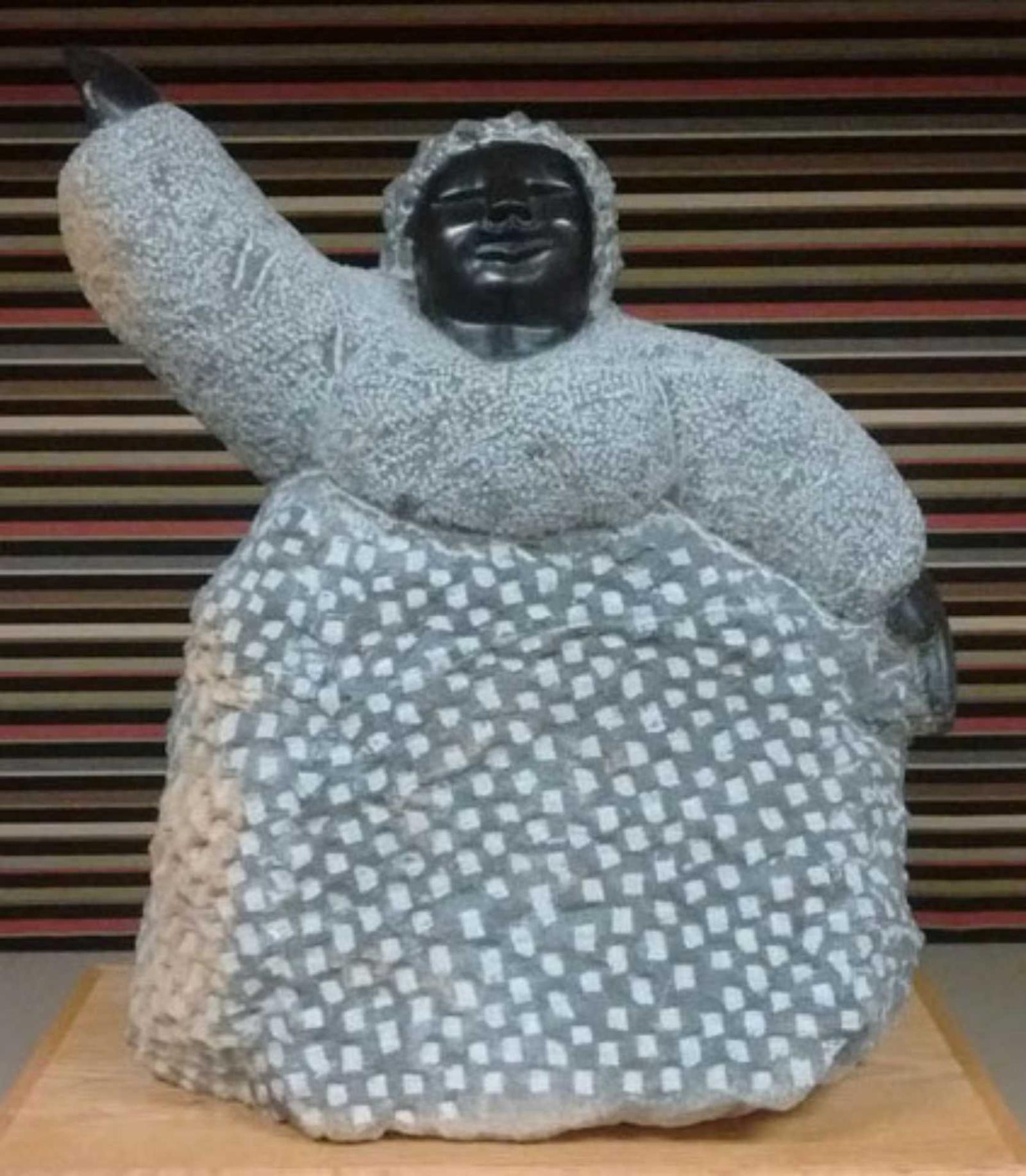
Shona Sculptures
Located in various places around campus, indoors and outdoors
Seven sculptures were donated in 2009 by the David Barnett Gallery in Milwaukee; six more were transferred to Lawrence from the Trout Museum of Art and installed in 2022. Shona sculpture refers to a contemporary movement of stone carved pieces created by trained artists in Zimbabwe. The artists use hard, dense stone including serpentine, verdite, sandstone, granite, and steatite in rich greens, browns, blacks and grays. The contrast between rough cut, textured areas and burnished, high gloss surfaces are a distinctive feature of the carved sculptures.
The sculptures can be found in Memorial Hall, Colman Hall Courtyard, Center for Spiritual and Religious Life's GOLDGarden, and on Hurvis Crossing. All of them are also featured in the Wriston Art Galleries' online collections database.
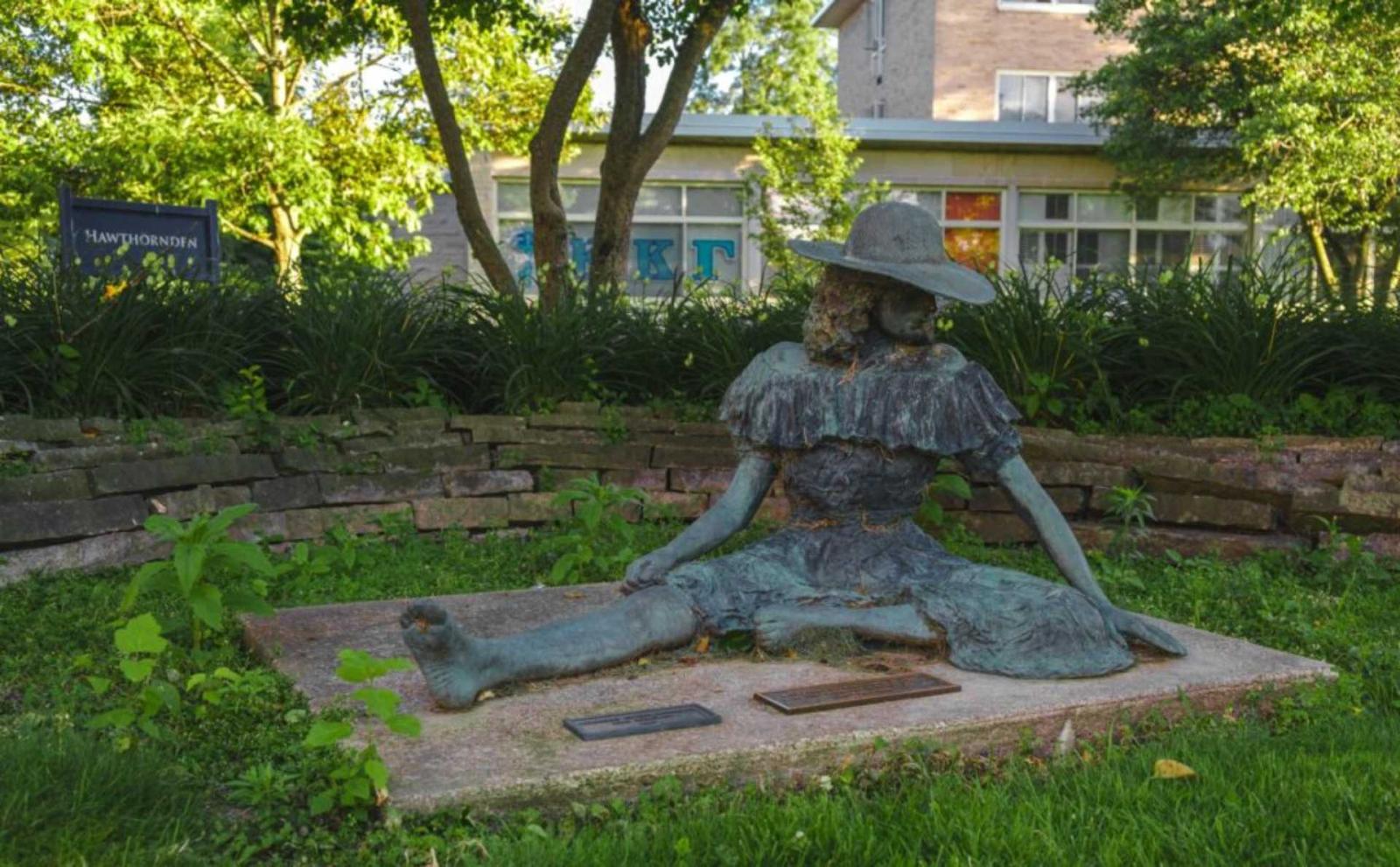
Hawthornden
Located between Colman Hall and Brokaw Hall
A beloved grove of hawthorn trees on the Milwaukee-Downer College campus known as Hawthornden was recreated near Colman Hall. The space was rededicated in 1991 and the Milwaukee-Downer College Class of 1961 gave the sculpture of a young woman sitting in grass in honor of their 40th reunion.
Learn more about Hawthornden, part of the Milwaukee-Downer College legacy

One Hundred and Four Point Shield
Located on the lawn west of Kohler Hall
Beatriz Cortez (b. 1970, San Salvador, El Salvador), 2019
The hypermodern domed structure recalls nomadic architectural forms and Indigenous ways of living. By referencing provisional structures, Cortez seeks to raise awareness about the precarity of housing for people who have been forcibly displaced and detained at contested borders. The sculpture also speaks to an unsustainable contemporary housing system and imagines potential alternatives for the future. The commission of this sculpture was made possible by the Ruth DeYoung Kohler II Foundation. Lawrence University gratefully acknowledges their support.
Public Art Highlights & Features
Otāēciah | This is Lawrence
"Otāēciah," a permanent installation on Lawrence's Kaeyes Mamaceqtawuk Plaza, is dedicated to the Menominee Nation and their ancestral homelands (on which Lawrence's campus is located).
Public Art
Explore public art across the Lawrence campus and downtown Appleton.
